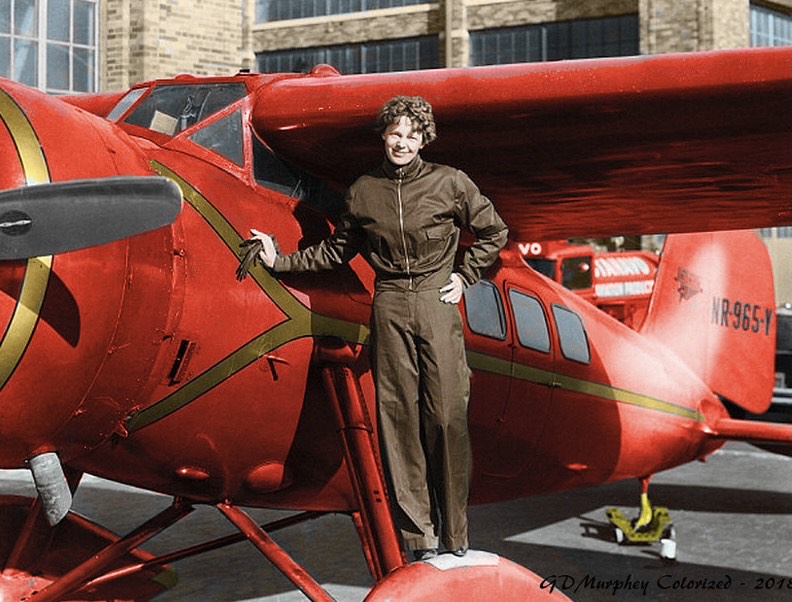This past week, the talk of the town is Amelia Earhart and the claim that her plane has been discovered. It’s been 86 years since Earhart went missing, but after all this time, the search to find out what happened to the infamous pilot has not stopped. Many scientists have dedicated their careers to the search for answers regarding what happened to Earhart and where her plane went. Recently, researchers believe they have captured sonar imaging of Earhart’s plane in the deep Pacific Ocean.
In 1937 Earhart embarked on her attempt to become the first woman to fly around the world with her co-pilot and navigator Fred Noonan. When her plane, the 5B Vegat did not make it to the island where it was scheduled to refuel, it triggered one of the largest, most expensive searches in American history. Now, with the help of sonar imaging (a process that depicts what lies below the water’s surface), researchers found her plane about 100 miles from Howland Island, where she had intended to land nearly one hundred years ago.
Based on the sonar imaging of the plane, they have compared it to the proportions of Earhart’s plane, a Lockheed VB Vega, and say that it is very likely the same plane. At the time of the discovery, researchers did not have the proper equipment to seriously determine that the planes were indeed the same, but they plan to return to the site later this year to get close-up images of the wreckage and prove once and for all what happened to Earhart.
The possible discovery of Earhart’s plane is bringing up new debates and controversies about her case. Many claims have been made about negligence with bones believed to belong to the aviator. Three years after Earhart’s disappearance about 350 nautical miles away from Howland Island, a man discovered 13 human bones buried near the remains of a campfire on an island called Nikumaroro. When the bones were sent to scientists, they were all determined to be the bones of a male. Most of the bones went missing after the research, likely due to the scientists misplacing them. This is where the controversy begins. Many believe this was malpractice and that insufficient research was done to properly determine whether or not they belonged to Earhart.
Years later, forensic anthropologist Richard Jantz analyzed the measurements of the remaining four bones, one of them a skull. Jantz compared them to Earhart’s body measurements and claimed that his research “strongly supports the conclusion that the Nikumaroro bones belonged to Amelia Earhart.” Jantz later argued the skull belonged to a female, a statement that prior scientists disagreed with.
This argument resurfaced in articles from 2012 that discussed radio messages believed to be made by Airhart that were at the time ignored or deemed useless. Now that there is a new uproar about her disappearance, researchers say they will re-examine what happened with the transmissions. However, it’s difficult to say no to what has happened with them since all the information we have about the radio messages is from years ago and could be just as inaccurate as past theories.
Hopefully, scientists won’t let this fall under the radar anymore. Many are eager to know the real story of what happened to Earhart and her co-pilot, Fred Noonan, but until the scientists go back to the site of the solar imaging and take a closer look, all the general public can do is speculate.









